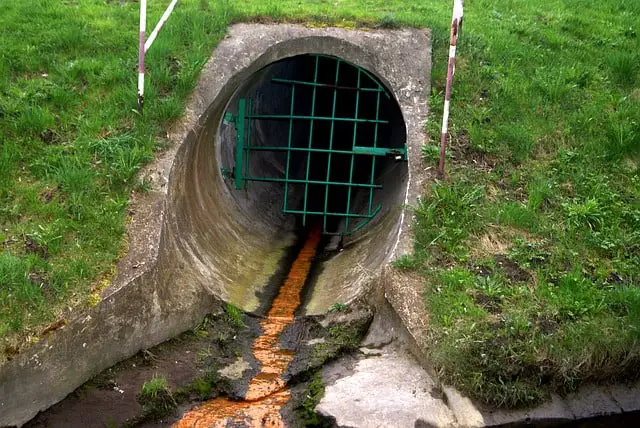Can A Septic Tank Be Moved?
If you are planning to do a major renovation or remodeling of your residential or commercial property, knowing the location of your septic tank system is one of the most important first steps, deciding if can and should move a septic tank is another.
A septic tank is a feature present in a lot of homes, and they are typically buried underground. Part of any major remodeling jobs in any property is the careful consideration whether you need a new or additional septic tank (likely for additional structures), or if you can just relocate the existing one (for revamps in landscape or floorplans). There are several advantages and disadvantages to each alternative, and it is always best to consult with professionals before deciding.
Can a septic tank be moved? Yes, definitely! If you want to relocate your septic tank, your first step is to contact a certified septic system professional that specializes in this particular procedure. Moving a septic tank entails septic system expertise as the process can be quite tedious to the untrained personnel. It is an entire specialized process of uncovering the septic tank, removing the tank, and relocating it. A professional company will be able to determine where a system can be placed based on the characteristics of your property. Once an appropriate location has been determined, the process of moving the tank can commence.

Before you can understand how a septic tank is moved, it is important to educate yourself about septic tank systems and its basic components:
- the septic tank
- a pipe that runs for your home to the tank
- a drainfield
- soil that eliminates microbes from the wastewater
Your septic tank is buried under your property and is made of either concrete, fiberglass, or polyethylene. Wastewater travels through the pipe running from your home and into your tank where it settles. The septic tank holds the wastewater long enough for the solid wastes to decompose and turn into sludge. The wastewater then exits the tank and travels to the drainfield where it is treated by the soil. This is where harmful bacteria and viruses are eliminated from the wastewater.
Septic tank systems require a substantial amount of space. It is usually more convenient and less costly to abandon an old system instead of moving it, and to install a new septic tank. Furthermore, keep in mind that aged concrete septic tanks that may have corroded will likely crumble and not withstand getting relocated. But then, additional driveways, home extensions, and/or landscape overhauls may make moving a septic tank inevitable. Remember that moving a septic tank is a major undertaking that requires excavation and heavy equipment. This is why it is ideal to consult with septic tank professionals about the viability of your existing septic tank for movement and, if decided, contract them to complete the process for you.
How to Move a Septic Tank
Moving a concrete septic tank ideally requires specialized skills, as well as heavy equipment. Below is a rundown of the process of moving a septic tank. This could be helpful in the decision whether you would like to carry out the move yourself or if you would be more helped by contracting service professionals.
- A septic system maintenance company is ideally contracted to remove all wastewater and organic material from your existing septic tank.
- The soil over the septic tank needs to be removed, ideally with an excavator. Shovel off the top of the tank by hand as you get closer to the tank. This is to avoid damaging the tank.
- Manhole covers on the manhole risers need to be removed and set aside.
- Disconnect or cut off the inlet and outlet pipes running from the tank using a PVC pipe saw.
- With an excavator, dig down on all sides of the septic tank. Be very careful not to damage the tank by keeping the excavator bucket at least 6 inches away from the sides of the tank and shoveling by hand near the tank.
- Securely attach the lifting bar from the tank truck’s boom to the lifting eyes on the septic tank. Ensure that the bar through one eye is pushed all the way through to the lifting eye on the other side of the tank.
- With cables, lift the tank slowly and carefully. Note that there will be a suction on the base of the septic tank which can be stronger than the truck’s lifting force. Lift in small increments of force until the suction breaks away, freeing the tank. Note that lifting the tank too hastily and with much force can damage the septic tank or the tank truck.
- Place the removed septic tank squarely onto the flatbed part of the tank truck
- The new septic tank hole has ideally already been excavated with the correct dimensions of the septic tank.
- Move the tank truck right next to the new excavation before lowering the septic tank into the new tank hole.
- Replace the inlet and outlet pipes into the inlet and outlet holes in the tank. Make sure that the pipes are clear of the baffle on the inside of the tank.
- Fully cover the tank back with the excavated soil.
- Ideally using a mechanical soil compactor, press the backfill in 6 to 12-inch increments.
- Restore the manhole covers on the manhole risers.
The Cost of Moving a Septic Tank
In the US, the national average cost for septic tank installation is somewhere around $5,000 to $6,000. The cost to install a typical 1,000-gallon septic tank (usually needed for a 3-bedroom home) can range anywhere from $2,000 to $5,000, including the price of the tank itself, which falls between $600 and $1,000. The cost of moving an existing septic tank will run you up similar figures, possibly slightly less if your existing septic tank is in good working condition.
The variance between the costs of installing a new septic tank versus moving an existing one may be found in the costs of excavation. Relocating an existing septic tank requires twice the excavation of installing a fresh one. The amount of digging that needs to be done during the preparation phase is necessary in evaluating the overall cost of the project. This work usually requires a fair amount of excavation and can likewise affect landscaping. Additional costs, yes. Excavation costs can depend on the number of shrubs, plants, and trees that must be cleared from the area, as well as the particular type of equipment to be used. The quality of the soil and the terrain are factors, too. Typical costs for excavation can range from $1,000 – $4,000, but septic system contractors may package this into the total project cost.
It is recommended that you contact a local septic or excavation contractor for an estimate. It is better to hire an experienced professional that specialize in septic tank systems rather than one who does municipal sewer connections. If excavation is not carried out properly, a large portion of the hole may be washed away by heavy rain.
The drain or leach field is the section of the septic system that carries the wastewater back to the soil. The first sign of a problematic drainfield is typically a “swampy” area in your yard, or foul odor (of sewage) on your property. Drainfields may need to be replaced when moving a septic tank and this can cost anywhere from $2,000 to as much as $10,000.
Can You Build Over an Existing Septic Tank?
A typical septic system has four major components: the pipe from your home, a septic tank, a drainfield, and the soil surrounding this drainfield. The inlet pipe carries wastewater from your plumbing system and into your septic tank, where it is treated before being brought to the drainfield. Toxic waste elements are removed from the wastewater before it is released gradually into the soil. Of these four components, the septic tank and the drainfield are the ones that should be taken care not to be disrupted or damaged in the process of renovations or remodeling.
Your septic tank requires periodic pumping and maintenance, and so keeping it accessible is highly important. If you build over your septic tank, pumping and maintaining it will be very difficult. An alternative to building over your septic tank is to install removable boards or trap doors in order to maintain convenient access to the septic tank. The drainfield, on the other hand, uses the soil around it to process the effluent coming from the septic tank. Building on top of your drainfield will severely compromise this function. This is not yet counting the fact that you would be building over an area that contains sewage water, which is highly unsanitary.
The septic tank system in your home or business facility is a foremost necessity. It is nearly impossible to survive in any home or establishment if you do not have a fully-functioning septic system. For peace of mind, your septic tank system should always be kept in good running condition. Any changes to where your septic system is situated requires specialized skill and machinery. If you are planning a major transition in your home or facility, it is always wise to enjoin the help of certified professionals.
Visit our State Directory For Local Septic Pumping, Repair, & Install Service Providers
https://blog.lyttleco.com/septic-tank-maintenance/can-a-septic-tank-be-moved
https://www.diychatroom.com/f7/possible-reasonable-move-septic-tank-286770/
https://www.contractortalk.com/f62/relocating-septic-tank-74427/
https://homesteady.com/how-8136728-move-septic-tank.html
https://www.homeadvisor.com/cost/plumbing/install-a-septic-tank/
https://www.homeownershub.com/answers/cost-of-moving-a-septic-system
https://nearsay.com/c/500064/246034/can-you-build-over-a-septic-system











